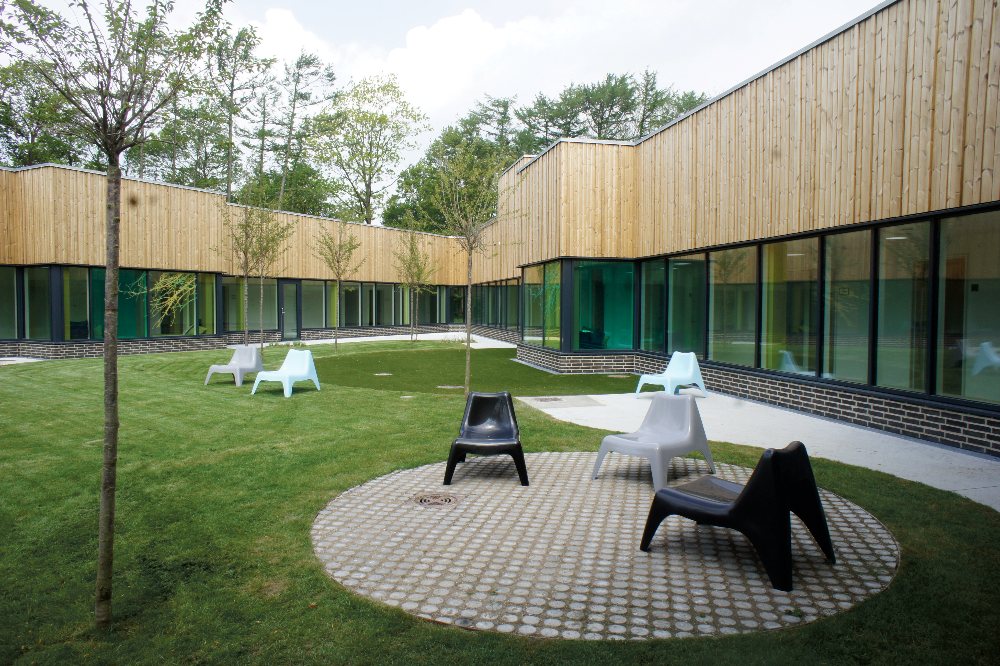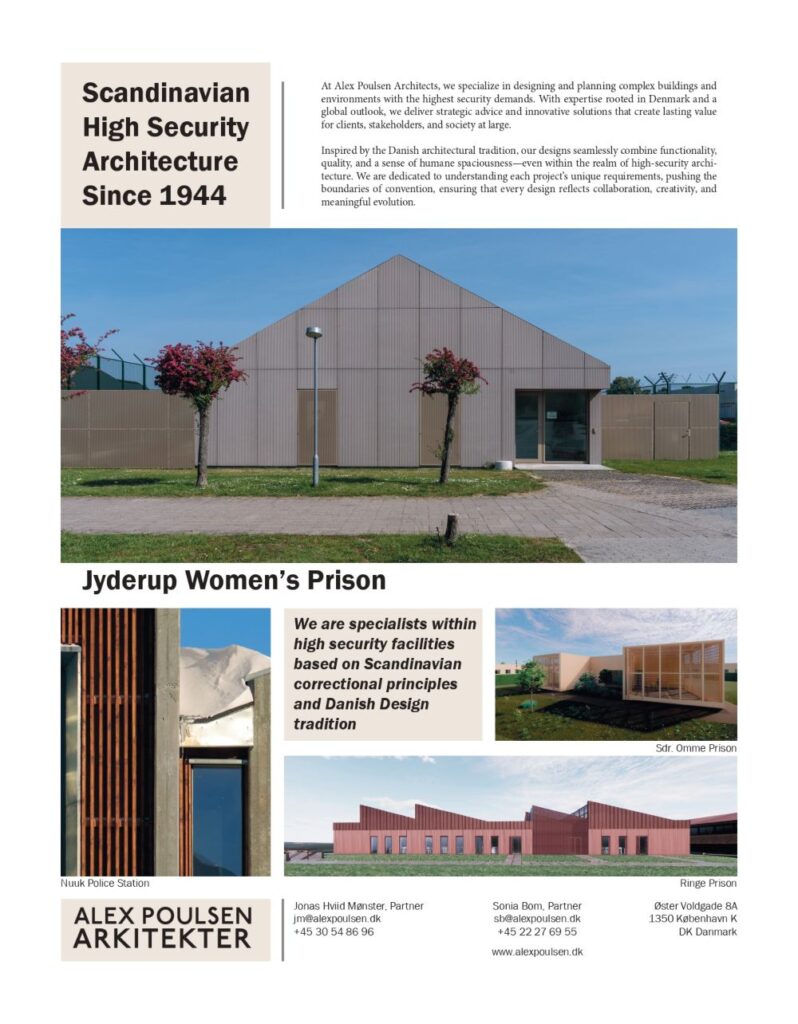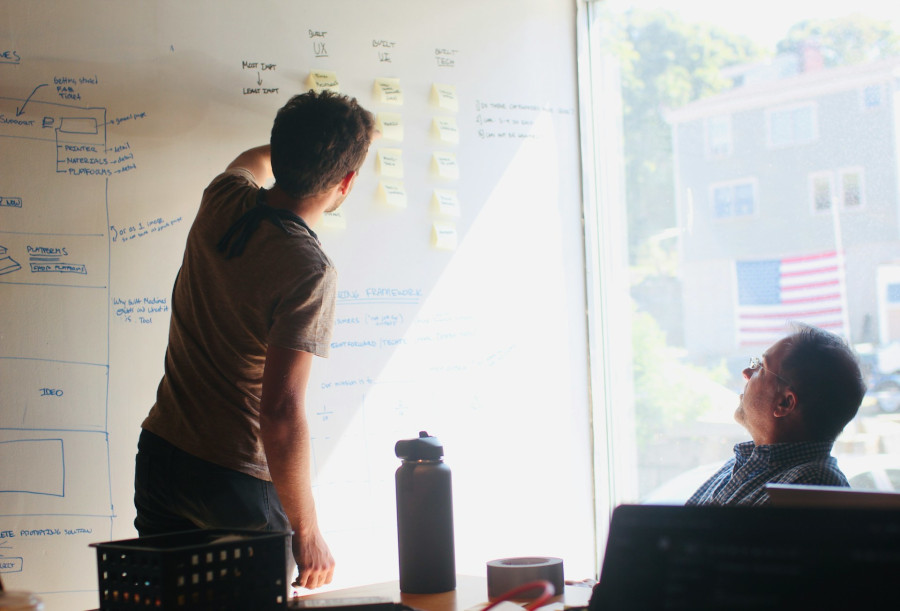Case Spotlight: Denmark
Sonia Bom & Jonas Hviid Mønster, Alex Poulsen Architects
In Denmark, architecture plays a pivotal role in shaping humane corrections, guided by the principle of normalisation. This design philosophy underlines the country’s approach to incarceration, promoting rehabilitation and resocialisation over punishment. By creating environments that mirror the daily routines and structures of society, Danish prisons foster conditions conducive to reintegration and individual well-being.
Normalisation in Danish prisons is not just a theoretical ideal but a tangible design parameter that influences every aspect of prison projects. This approach aims to create spaces where persons deprived of liberty can experience a structured yet humane environment, reflecting the social and personal rhythms of everyday life outside prison walls. This is achieved by designing facilities that support a daily routine comprising work, education, community, privacy, leisure, and self-sufficiency.
At the heart of this philosophy is the belief that rehabilitation thrives in environments that balance security with a sense of normalcy. By prioritising humane and salutogenic conditions, Danish prisons serve more as social institutions rather than punitive ones, creating a foundation for meaningful rehabilitation.
Denmark’s strict national building codes and construction standards ensure that prisons provide a healthy physical environment for their occupants. These codes prioritise high-quality indoor environments, emphasising natural daylight, direct outdoor views, appropriate air and thermal quality, as well as acoustic balance. These elements also align with the principles of healing architecture, which seeks to create spaces that support mental and physical well-being.
In Danish prisons, these principles are evident as differentiated regimes and security levels, enabling facilities to cater to diverse needs while maintaining the appropriate level of safety. The design ethos extends beyond functionality, striving to imbue spaces with qualities that promote ownership, privacy, and community – factors critical to fostering a sense of dignity and autonomy among incarcerated individuals.
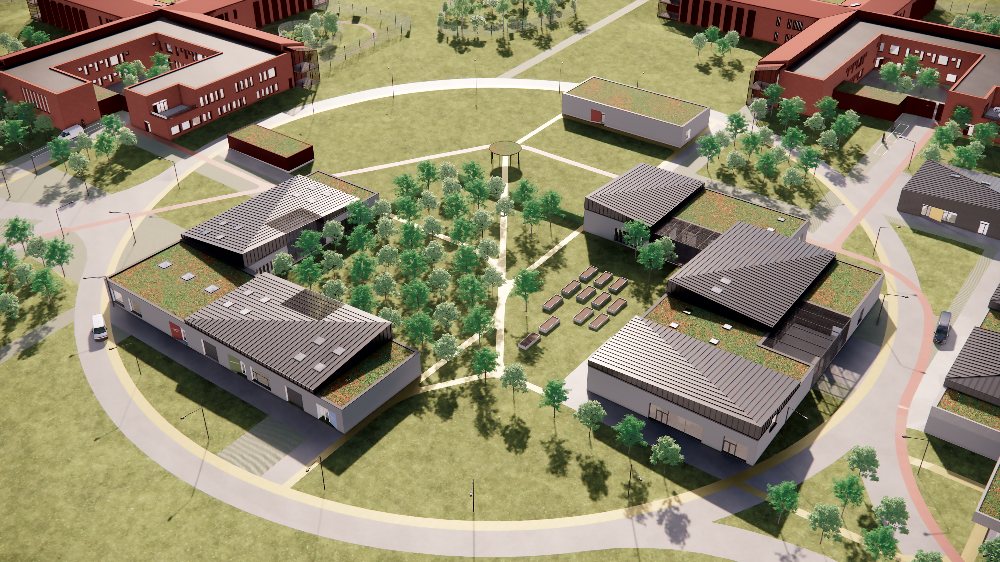
Modern Danish prisons are designed to resemble small, self-sustaining communities. This approach enables people in custody to engage in activities that reflect life outside the prison walls. Workspaces, educational facilities, and communal areas are seamlessly integrated into the prison’s layout, reflecting the rhythm of a typical day. Such spaces not only provide structure but also prepare residents for reintegration by cultivating skills and routines necessary for societal participation.
Furthermore, privacy and individual conduct are central to architectural design. Residents are provided with private spaces where they can reflect and recharge, alongside communal areas that encourage social interaction. This balance of solitude and community is a cornerstone of
normalisation, promoting both personal development and social skills. Use of domestic-like, yet robust, materials, colours and tactile surfaces where possible is also key, in order to create a less institutional environment.
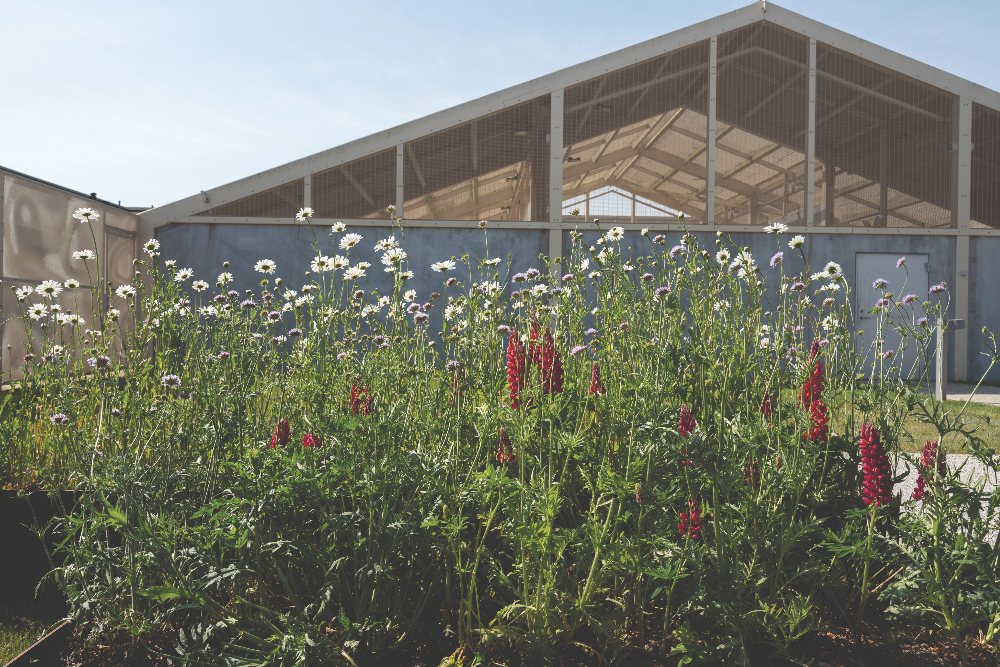
Scandinavian prison architecture exemplifies how design can contribute to humane incarceration while supporting the individual path to a successful resocialisation as well as keeping crucial bonds to personal peers.
Alex Poulsen Architects is at the forefront of implementing these principles in nordic prison design. By blending cutting-edge practices with established standards, the studio explores how architecture can support normalisation and optimise conditions for rehabilitation and resocialisation.
Through projects that reflect the Scandinavian commitment to humane incarceration, the firm addresses a critical question: How can society create the best physical environment for the well-being and reintegration of convicted persons?

